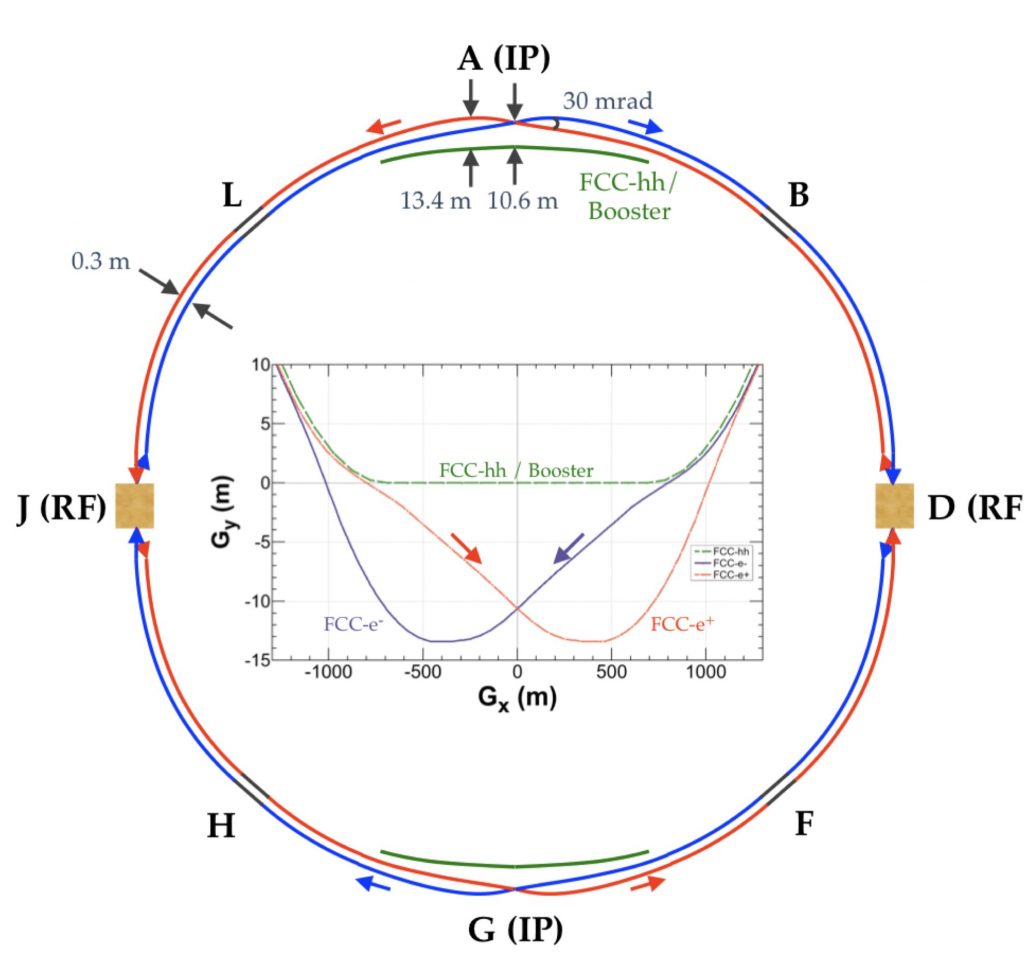
The studies of beam dynamics are centred on 3 main topics:
- The developments of a collaborative simulation frame-work where the peculiarities related to the physics of leptons will be added to the established CERN standards for numerical simulations. The general aim of this project is to set-up a new software framework that can be extended in phases with existing and new functionalities. FCC-ee will serve as the basis to evaluate the key requirements for such a framework and identify potential bottlenecks in the simulations. Two key challenges will be addressed in parallel, each needing input from the other, in order to help understand how they can be addressed efficiently in a single framework. The concept of the software framework should be developed in a sustainable way, providing a modular structure and extendibility in a collaborative approach. Open source software projects have demonstrated collaboration of a large number of developers in a systematic and very successful manner. The framework should allow easy utilization of modern computer science developments, in particular parallelization of numerical computations, advanced optimization techniques and scripting capabilities. The framework is aimed to be a tool for accelerator design work with a broad range of applications. The basic functionality that shall be implemented from the start includes beam-beam effects and 6D particle tracking simulations. This will allow to address the physics goals relevant for FCC-ee and mentioned in the second part of this project description, in particular radiation effects, beam-beam interactions and lattice non-linearities.
- Beam physics studies of the FCC-ee collider in the presence of beam-beam effects. The goal is to evaluate operational scenarios and possible performances in terms of luminosity and dynamic aperture.
- In addition, inspired by the CHART MAG-HTS4 project a very first step toward the design of the optics for a FCC-ee using combined function High Temperature Superconductor magnets has started. This study aims to propose an alternative optics design for the FCC-ee based on lattices where the main quadrupole magnets are replaced with combined function magnets that include dipole components to increase the filling factor of the machine. These magnets can also include sextupolar components, that would allow for the removal of sextupoles in the lattice and give more space for arc dipoles to further improve the filling factor. The goal of this study is to also feedback to the magnet design teams possible set of design specifications and multipole errors tolerances from beam dynamics considerations and particle stability to be used for the design of a first magnet prototype as proposed in the approved CHART FCC HTS4 project.